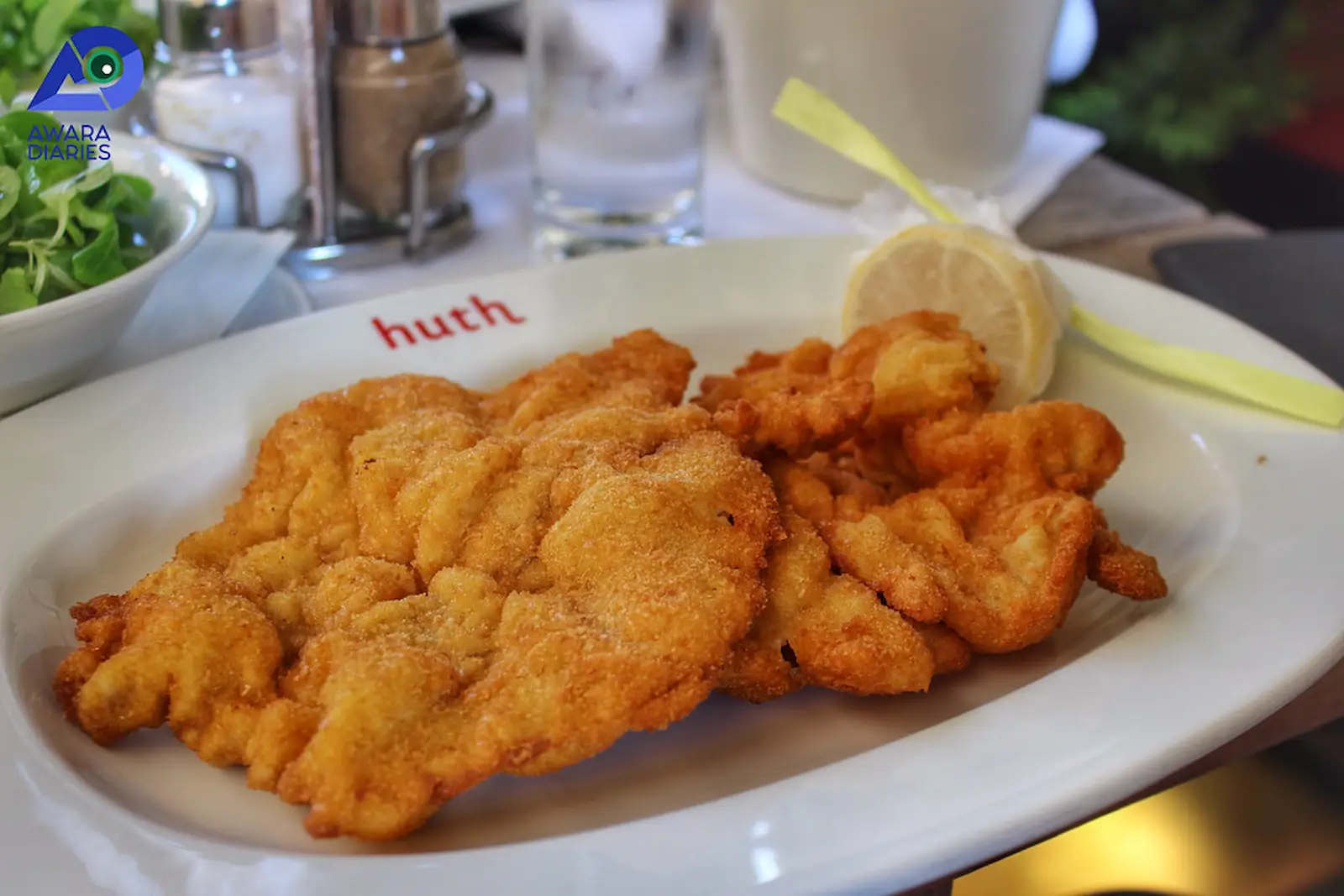Vienna is best understood through its food, so here are 11 dishes that explain its influences and customs. We’ve gathered where to try each recipe, current price ranges and the usual meal times.
The 11 traditional Viennese dishes you can’t miss
Vienna, the capital of Austria, is a city that wins you over not only with its imperial architecture, but also with its unique gastronomy. If you’re wondering what to eat in Vienna, here you’ll discover dishes that blend Central European influences, tradition, and comforting flavours. From classics like Wiener Schnitzel to desserts that have conquered the world, this list will guide you through the city’s essential flavours.
Wiener Schnitzel: The Austrian icon

This breaded veal cutlet fried in butter is the most iconic dish in Vienna. Its origins date back to the 19th century, and its name literally means “Viennese cutlet”. It is traditionally served with a slice of lemon and a side of potato salad or Erdäpfelsalat. To try the authentic version (with veal), book a table at Meissl & Schadn; at Figlmüller they are famous for their plate-sized pork schnitzel.
Tafelspitz: Elegance on a plate

This boiled beef, cooked with vegetables and spices, was Emperor Franz Joseph I’s favourite dish. It is served with Apfelkren (horseradish with apple) and a dill sauce. A classic in restaurants such as Plachutta, where they explain in detail how to enjoy it properly.
Did you know?
Tafelspitz is traditionally simmered in stock (with bones) for 2.5–3 hours, which gives it its uniquely tender, almost melt‑in‑the‑mouth texture.
Sachertorte: The most famous chocolate cake

This chocolate cake with a thin layer of apricot jam and a glossy chocolate glaze is an institution. Created in 1832 at the Hotel Sacher, it remains the most emblematic place to try it. Order your slice with Schlagobers (whipped cream) for the full experience.
Apfelstrudel: Vienna’s sweet embrace
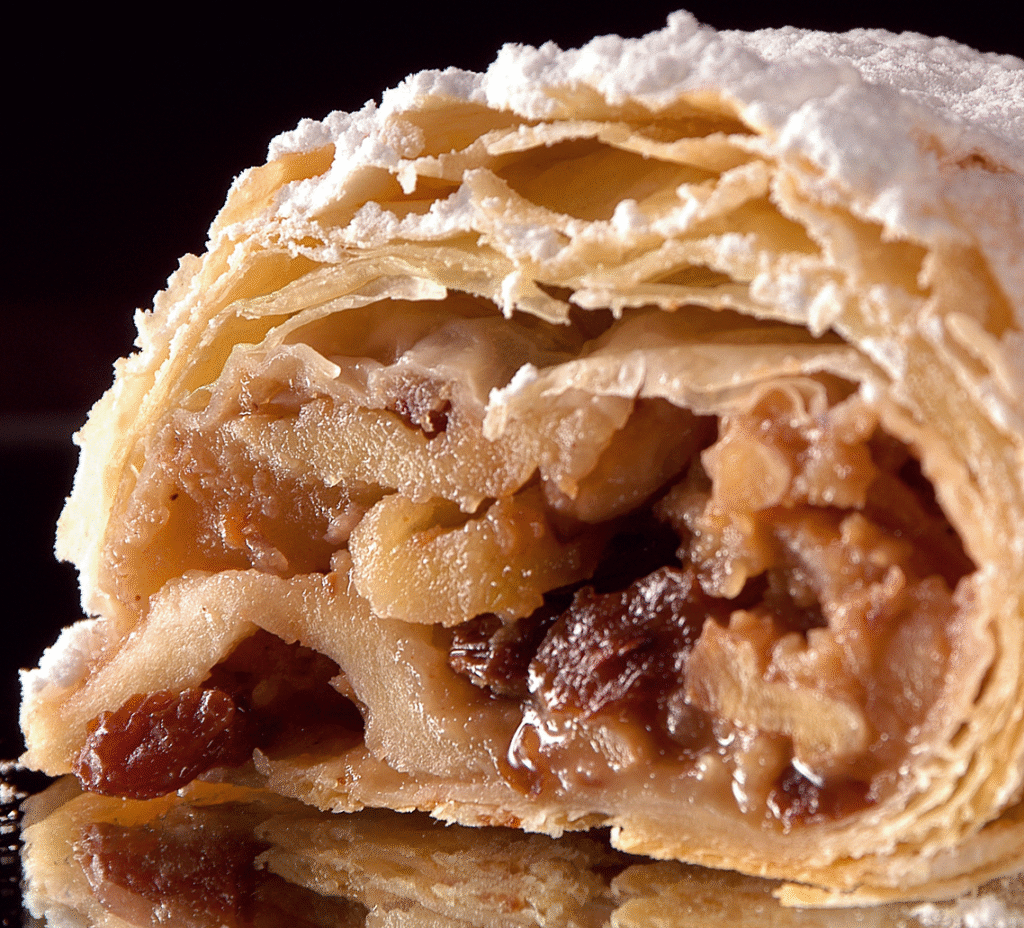
The Viennese apple strudel stands out for its hand‑stretched strudel dough (similar to filo) and the perfect balance between acidity and sweetness. Historic cafés such as Café Central or Café Demel serve it freshly baked, often accompanied by vanilla ice cream.
Gulasch: The Hungarian heritage

Although originally from Hungary, the Wiener Gulasch is made with beef, caramelised onion and paprika, resulting in a thicker stew than the original version. Perfect for cold days, you’ll find it in beisl (traditional taverns) such as Gasthaus Pöschl.
Käsekrainer: Austrian fast food

These cheese‑filled sausages are the kings of the street food stalls. They are served in a bread roll with mustard and Kren (horseradish). Don’t miss them at the Würstelstand you’ll find all over the city, especially at Bitzinger Würstelstand next to the Opera.
Germknödel: The sweet cloud

This yeasted dumpling filled with plum jam is served topped with ground poppy seeds and melted butter (or vanilla sauce). A hearty dessert that you’ll find in traditional cafés during the winter.
Liptauer: For snacking between meals

This fresh cheese spread mixed with paprika, chives and mustard is served on dark rye bread. It’s typical in heuriger (wine taverns) such as Weingut Wolff, accompanied by a glass of young white wine.
Beuschel: For the more adventurous

A stew made with veal lung and heart, cooked in a creamy sauce with lemon and capers. Although it sounds intense, it’s a traditional dish that showcases the influence of Austrian “nose‑to‑tail” cooking. Try it at Gasthaus Reinthaler.
Kaiserschmarrn: The imperial dessert

These shredded, caramelised pancakes served with apple compote owe their name (“the emperor’s mess”) to Franz Joseph I. The version at Café Residenz in Schönbrunn Palace is particularly memorable.
Wiener Würstchen: Viennese sausages

In Vienna they are called Frankfurter (outside Austria they are known as Wiener Würstchen). They are served in hot water with bread and sweet mustard. The Würstelstand am Hohen Markt is ideal for trying them as authentic street food.
What time people eat in Vienna: meal times and customs
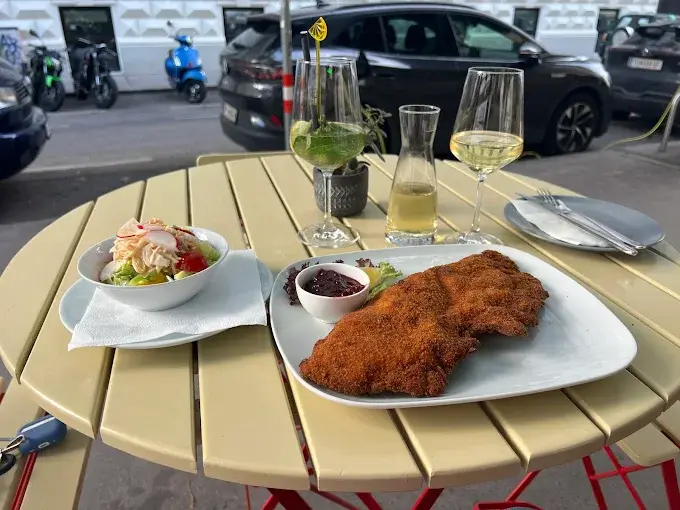
Viennese people usually have breakfast between 7:00 and 9:00 in cafés with Kaiserbrötchen (bread rolls). Lunch (Mittagessen) is between 12:00 and 14:00, while dinner (Abendessen) is served early, from 18:00 to 20:00. Cafés are social institutions where people spend hours reading newspapers on wooden holders or enjoying a Melange (coffee with milk).
Eating in Vienna: prices and budget options
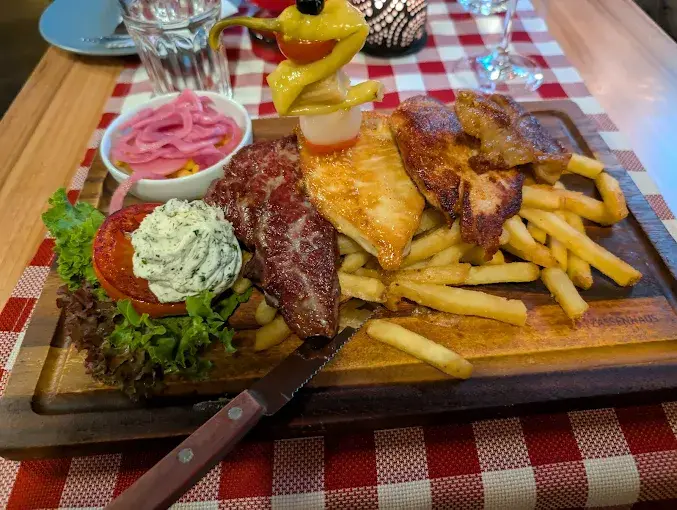
To eat cheaply in Vienna, make the most of the Mittagsmenü (set lunch menus) in restaurants for €12–20. Markets such as Naschmarkt offer dishes from €10. At a Würstelstand, a sausage usually costs €5–6. Here’s a comparison:
Daily food budget
- Low budget: €15–25 (street food + supermarket)
- Medium: €30–45 (set menus in standard restaurants)
- High: €60+ (gourmet restaurants)
Where to eat cheaply in Vienna

To eat cheaply in Vienna, these are our favourites:
- Schnitzelwirt: Huge schnitzels from €15
- Trześniewski: Open‑faced sandwiches at €1.80 each
- Lugeck: Main dishes from €14.90 (e.g. Krautfleckerl); the veal Wiener Schnitzel is around €32.90
Eating gluten‑free in Vienna

Vienna is surprisingly gluten‑friendly. Restaurants such as Hollerei offer clearly labelled gluten‑free options. To try a gluten‑free schnitzel with careful handling, Gasthaus Nestroy prepares many dishes in a gluten‑free version. If you’re looking for a gluten‑free alternative to Sachertorte, head to Simply Raw Bakery (vegan and gluten‑free version). Supermarkets like Billa have specialised sections with bread and snacks.
Tips for eating like a local
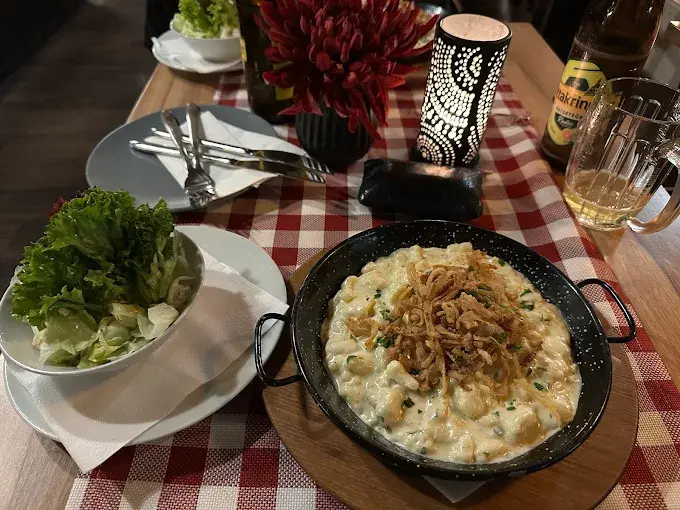
- In restaurants, tap water (Leitungswasser) is served in many places if you ask for it; in others there may be a small charge
- Tipping: Round up the bill or leave 5–10% (you can add it when paying by card or in cash)
- Many places close on Sundays: always check opening hours
Best free tours in Vienna
Si acabas de llegar a Viena, este Free Tour es la opción perfecta para conocer la capital de Austria. A…
Un free tour por el centro es la mejor manera de conocer Viena, su historia, monumentos y edificios más importantes.
Nuestros guías autorizados de Austria, guías turísticos certificados por el estado, conocen los lugares turís…
Free Tour Viena – PARTE 2 Las huellas judías y la Viena de Hitler El complemento ideal para el
Mozart, emperadores, escalope y strudel (¡no, sin fideos!). ¿De verdad eso es todo lo que necesitas saber sobre Viena? ¡Para…
La Cuna de Viena es un free tour que explora el extraordinario pasado y el fascinante presente de Viena. …
Acompáñenos en un free tour por el centro histórico de Viena. Juntos exploraremos y descubriremos las historias y los …
TOURS ABSOLUTOS DE VIENA Somos un pequeño grupo de guías individualistas y experimentados.
* The information on prices, opening hours and access conditions is current as of November 2025 according to official sources. This data may change at any time due to public holidays, construction works or changes in regulations. Always check the official websites or phone numbers of each place before your visit.
